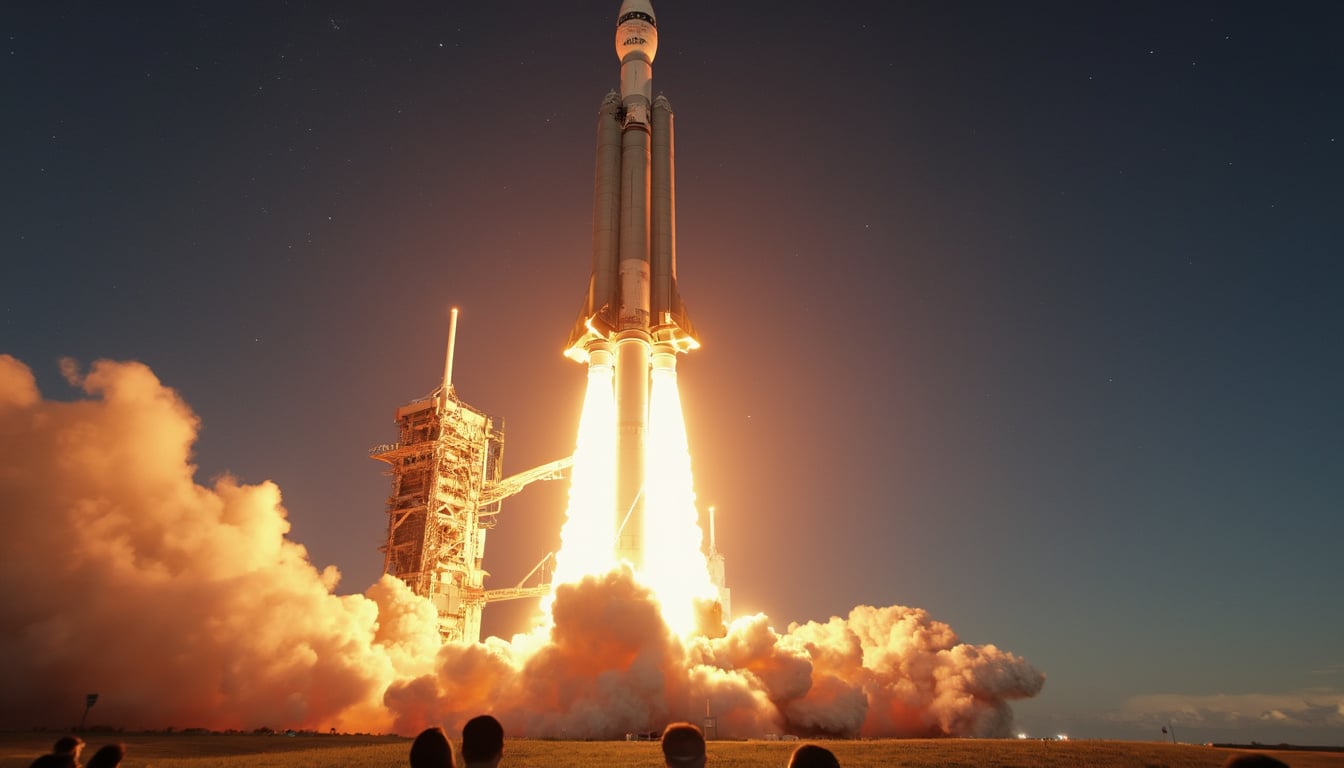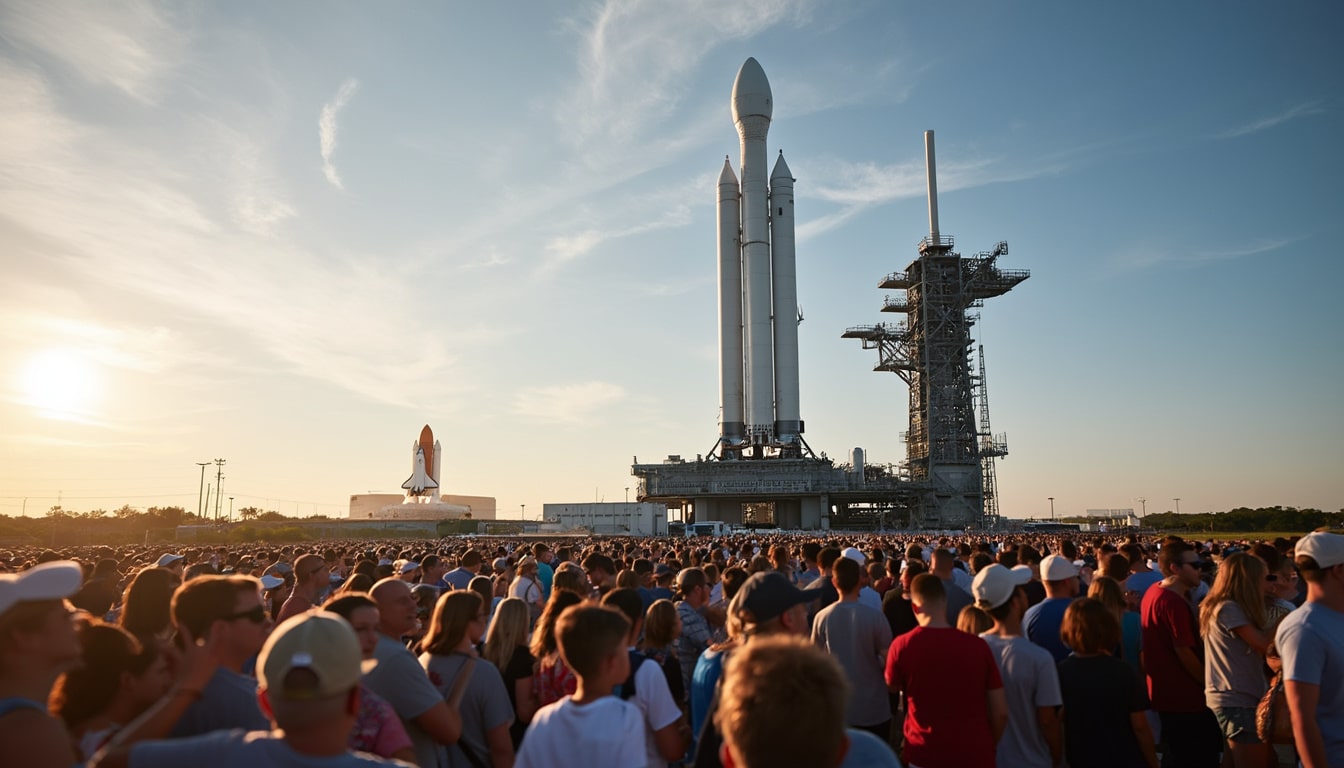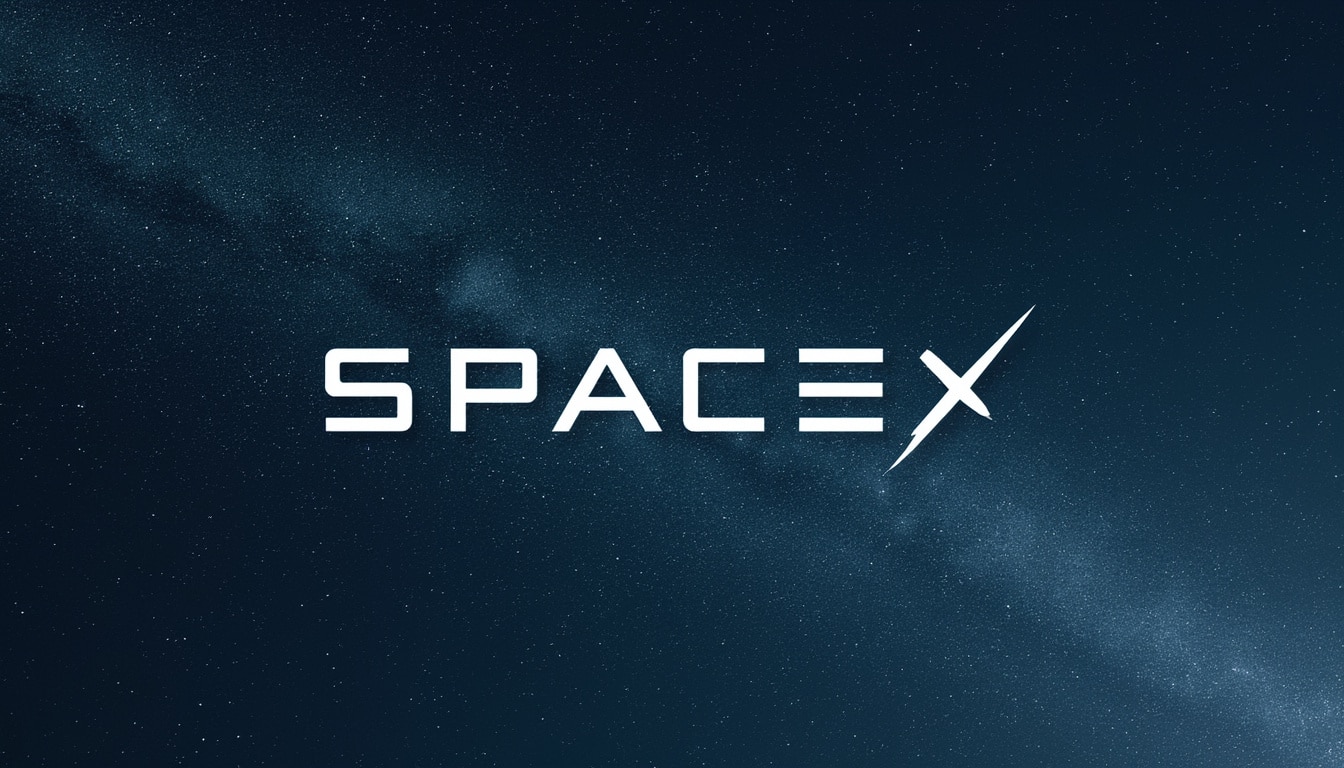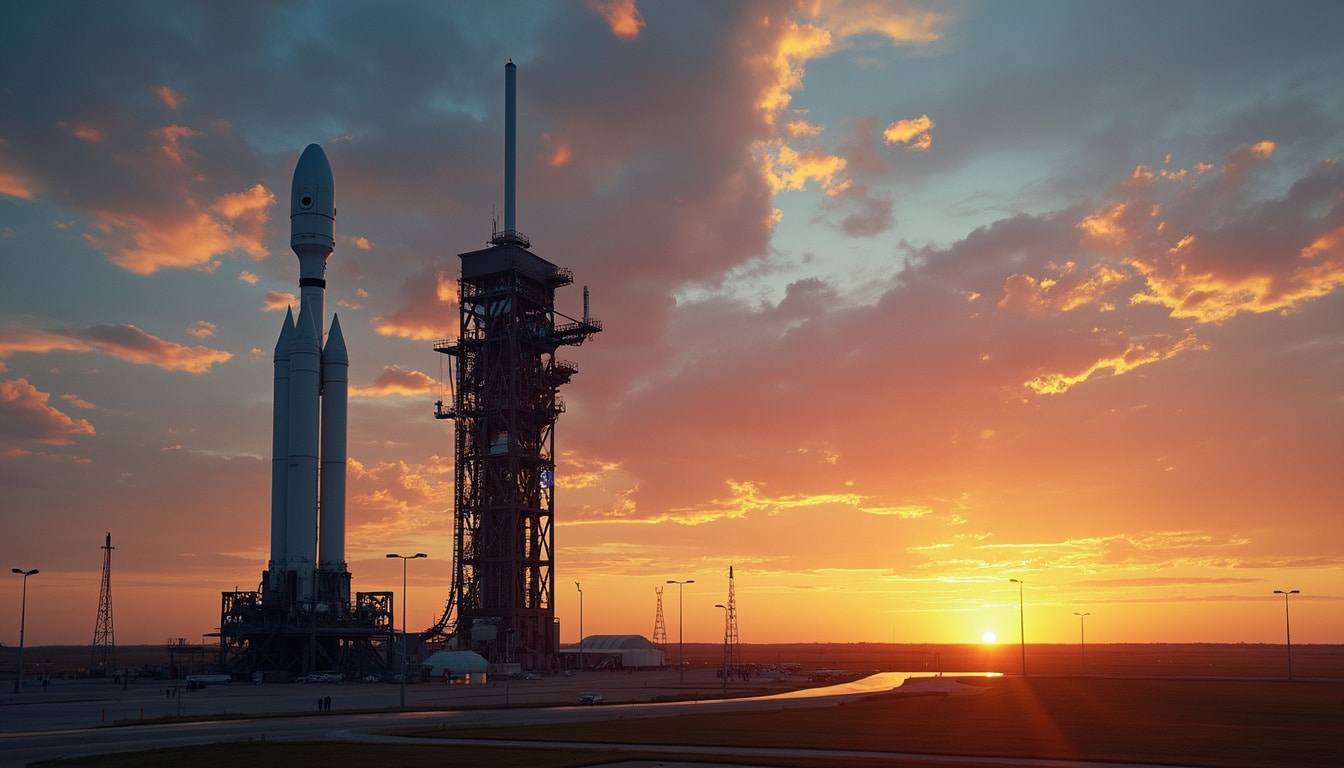The wonders of space travel continue to unfold with each passing mission, driving humanity’s thirst for exploration and connectivity.
On February 15, 2025, the world witnessed yet another remarkable milestone as SpaceX launched a Falcon 9 rocket from Cape Canaveral Space Force Station, effectively deploying 21 new Starlink satellites. This launch not only enhances the existing satellite constellation but also paves the way for groundbreaking advancements in mobile connectivity, especially with the inclusion of Direct to Cell technology.
The Starlink project, designed to provide internet access to underserved areas globally, showcases the commitment of SpaceX to revolutionize connectivity. As these satellites ascend into their designated orbits, they symbolize progress – not just for SpaceX, but for our collective future in the cosmos.
The Rise of Starlink and Falcon 9

The journey of Starlink commenced with a vision to bridge the digital divide through satellite technology. With its innovative Falcon 9 rocket, SpaceX has achieved a level of reliability and reusability that dramatically reduces costs associated with launches.
This particular mission, designated as Starlink 12-8, marked an impressive 26th flight for the Falcon 9 first stage booster. Such achievements demonstrate not only engineering prowess but also commitment to sustainability in aerospace technology, ensuring that each launch is as efficient as possible.
The deployment of these satellites is a testament to SpaceX’s relentless pursuit of innovation. With 21 Starlink satellites launched, including those equipped with Direct to Cell capabilities, SpaceX is positioning itself to enhance mobile telecommunications capabilities for users worldwide. As regulatory bodies adjust to accommodate this new technology, the implications for consumers are vast, providing opportunities for revolutionized access to broadband services.
The Technology Behind Starlink Satellites
Starlink satellites are equipped with advanced technologies aimed at delivering high-speed internet to remote and underserved areas. Their design allows them to operate in low Earth orbit (LEO), which significantly reduces latency compared to traditional satellite internet services.
Each satellite features a sophisticated phased array antenna, enabling them to directly communicate with user terminals on the ground. This technology is at the heart of the Direct to Cell capabilities, allowing users with compatible devices to connect to the internet without the need for a traditional Internet Service Provider (ISP).
Furthermore, the satellites are designed to work collaboratively, forming a mesh network that enhances coverage and service reliability. As new satellites are launched, the network becomes denser, improving connectivity continuously.
This innovative approach can potentially revolutionize how we perceive internet access, especially in isolated regions. As users find new ways to connect, the global digital landscape will transform, ushering in educational and economic opportunities previously thought unattainable.
The Launch Experience

The anticipation leading up to a SpaceX launch is palpable. As fans of space exploration gather at Cape Canaveral, the atmosphere is filled with excitement. SpaceX’s meticulous planning and dedication to safety bring a level of assurance that attracts enthusiasts, scientists, and casual observers alike.
As the clock counts down to liftoff, a detailed weather evaluation was conducted by the 45th Weather Squadron at Patrick Space Force Base, which indicated an 80 percent chance of favorable weather. This forecast was instrumental in ensuring a successful launch opportunity.
At precisely 1:14 a.m. EST, the engines of the Falcon 9 ignited, propelling the rocket into the dark sky, leaving a trail of brilliant light as it ascended. The roar of the engines, coupled with the beautiful sight of flames and smoke enveloping the rocket, created a breathtaking spectacle.
Eight minutes later, the first stage booster completed its mission, landing on the SpaceX droneship ‘A Shortfall of Gravitas.’ This achievement marked the 98th successful booster landing for SpaceX, further emphasizing their leadership in reusable rocket technology.
Weather Considerations for Space Missions
Proper weather conditions are paramount for successful launches. In the lead-up to this event, SpaceX relied on data from local meteorologists to analyze wind patterns, cloud formations, and potential precipitation.
The Cumulus Cloud Rule, which governs launch windows, remained a primary concern due to the high winds and changing weather. The decision to launch was made judiciously, balancing the need for progress with safety protocols.
This commitment to safety is a core value for SpaceX. The robustness of their launch operations, combined with an understanding of environmental factors, allows them to make informed decisions, reducing the risk of complications in the mission.
There’s a fine line between the excitement of a launch and the precautions that must be taken. In every mission, the complexity of space exploration is balanced with strong operational procedures that prioritize the safety of both crew and equipment.
Looking Ahead: The Future of Starlink

As the Starlink constellation continues to grow, the future of global connectivity appears promising. With each launch, SpaceX moves closer to achieving comprehensive coverage around the globe, addressing areas that traditionally lack high-speed internet access.
This space-based internet service is crucial for socioeconomic development, allowing individuals and businesses to participate in the global economy. E-learning, telehealth, and remote work are just a few sectors that can benefit from enhanced connectivity. The role of satellites in bridging the digital divide cannot be overstated.
As more countries adopt this technology, regulations will evolve to facilitate integration with existing communication infrastructures. The global landscape of telecommunications is on the brink of transformation, driven by the relentless innovation of companies like SpaceX.
The integration of Direct to Cell capabilities further expands the potential of the Starlink network, suggesting the emergence of new communication protocols. As we advance, the synergy between terrestrial networks and satellite systems will redefine how we connect.
The Role of Partnerships in Space Technology
The expansion of Starlink’s capabilities is not solely the result of SpaceX’s efforts. Strategic partnerships with tech giants and telecommunication companies can significantly impact the rollout and user experience of satellite-based internet services.
For instance, collaborations between SpaceX and cellular networks could provide a seamless experience for users as they transition between traditional internet and satellite services. These partnerships aim to enhance service quality and consumer satisfaction.
Moreover, as space technology continues to evolve, collaborative efforts can lead to the development of newer technologies that drive the industry forward. The implications of such partnerships extend beyond mere connectivity, fostering innovation at a global scale.
The vision for the future involves being interconnected through various channels, including cellular and satellite communications. As we explore this frontier, the merging of insights from diverse fields becomes essential.
A Closer Look at SpaceX’s Achievements

SpaceX has made exceptional strides in space exploration and commercialization. Their innovative approaches include the development of reusable rockets and ambitious missions aiming for interplanetary travel.
The successful deployment of 21 Starlink satellites not only highlights SpaceX’s operational excellence but also demonstrates its ability to adapt and grow in a competitive space industry.
Every launch adds to their legacy of achievements and opens doors for future missions. As the push to Mars becomes more tangible, the groundwork being laid today will support those aspirations.
SpaceX’s leadership in the commercial space sector has inspired a new wave of companies to explore outer space. This competitive atmosphere will ultimately benefit humanity, akin to a new space race driven by innovation and collaboration.
Community Impact: Starlink’s Global Reach
As Starlink continues to expand, its influence can be felt on a global scale. This service directly impacts educational opportunities, remote work dynamics, and healthcare accessibility.
Many regions where connectivity is unreliable can now access online resources, participate in remote learning, and receive telehealth services. The implications are profound, allowing individuals in remote areas to engage with the world like never before.
As we move forward, enhancing digital literacy alongside availability will be crucial. Programs that educate users on leveraging online resources can amplify the benefits of services like Starlink, ensuring inclusivity in the digital age.
The journey toward universal connectivity is multifaceted, requiring the collaboration of multiple stakeholders. Success will ultimately depend on the collective efforts to empower communities with access to information.
The Future Beckons

As we gaze up towards the stars and witness the thrilling advancements in space exploration, it’s clear that the future is bright. The technological achievements of SpaceX and the deployment of Starlink satellites mark the dawn of a new era.
Combining innovative technology with a commitment to connecting the world, SpaceX is poised to redefine our digital landscape. The prospect of universal internet access is an exhilarating thought, hinting at what the universe has yet to offer.
Each mission serves as a reminder that our reach is limitless. As we strive to solve complex challenges and push the boundaries of what is achievable, we explore not just the cosmos but the vastness of our potential as a society.




Leave a Reply